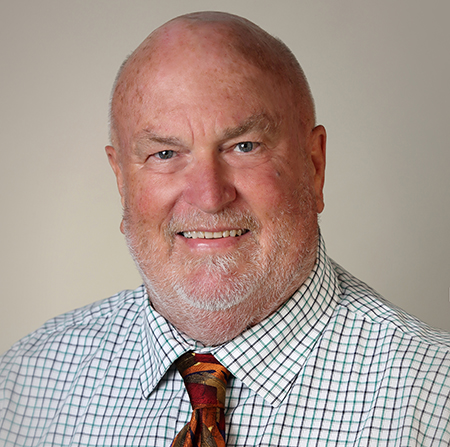
Bone is crucial.
After blood, it’s the most frequently transplanted tissue, with 1.6 to 2 million bone transplants performed in the United States each year.
One of the most commonly performed bone transplants is a spinal fusion, where surgeons fuse together two or more vertebrae so that they heal into a single, solid bone. The procedure is done to eliminate painful motion or to restore stability to the spine. During these procedures, the transplanted bone might come from a patient’s pelvis or from a bone bank.
While using a patient’s own bone for procedures like the spinal fusion is best, there might not be enough bone available to make the procedure work. In this case, doctors will treat patients with growth factor, which stimulates bone production in the patient but unfortunately has adverse side effects and is very costly.
More than mouths
That’s why work by Professor Malcolm Snead is so crucial. Snead recently received a grant from the National Institute of Arthritis and Musculoskeletal Diseases (National Institutes of Health) for a project to create a bioactive nanomaterial that can stimulate bone regeneration.
The project, titled “Supramolecular nanofibers for recombinant free growth factor-free spine fusion,” is an inter-institutional partnership between USC and Northwestern University. Sam Stupp, a Northwestern professor, is the principal investigator, with Erin Hsu, also of Northwestern, and Snead serving as co-principal investigators.
“This is an example of fundamental research that can improve the human condition,” says Snead, who joined the Ostrow faculty in 1984 and has been the chair of the Division of Biomedical Sciences since 2012. It’s also another way that craniofacial research extends beyond the mouth.
Boosting the body’s own bone production
Yan Zhou, a research assistant professor at Ostrow who is working with Snead, says the origins of the project lie in dentistry. Zhou worked on understanding a small molecule that occurs naturally during tooth development. “Later on we found this molecule can promote bone formation,” he says, which opened up a new path of inquiry about the molecule. At the same time, Snead had been working with a group at Northwestern on nanofiber scaffolds — so they thought of a way to combine their collective expertise to come up with a way to promote bone formation in both long bones in the body and small craniofacial bones.
The nanofiber scaffold developed in this work will be used either on its own or in combination with bone marrow stromal cells rather than with recombinant growth factor, Snead explains. The work will facilitate the repair and regeneration of bone by enhancing the bone-forming capacity of a patient’s own native growth factors. The nanofiber matrix, created by Stupp, binds the protein by molecular design in the way that natural sugars bind it in our bodies and then slowly releases it to encourage bone growth, instead of in one early burst, which can contribute to side effects.
Applications for a number of fields
Such an approach could remove the need for recombinant factors, providing a safer and more effective therapeutic strategy for bone regeneration in spinal fusion and orthopedic applications. Other procedures could also benefit from the nanomaterial — from repair of bone trauma to treatment of bone cancer to bone growth for dental implants. “If we can use the nanofiber and molecule in low doses, we will have a huge market because without those side effects, it will be much better for patients,” Zhou explains.
This grant will allow the group to demonstrate safety and efficacy in animal models for the FDA, so they can move more quickly from the lab to the operating room, Snead says.
As he applies fundamental science to a wide array of applications, Snead remembers some career advice he received from his thesis advisor: Do work that is the most fundamental so it will have the greatest impact on the widest number of fields.
“We continue to be driven that way: how cell signaling occurs and how nanotechnology can be used to modify responses that have been developed during hundreds of millions of years of evolution,” he says. “Those discoveries keep me up at night as an opportunity: Is there enough time to really explore all of these things and tease out from them where they can be applied to the health of individuals?”
